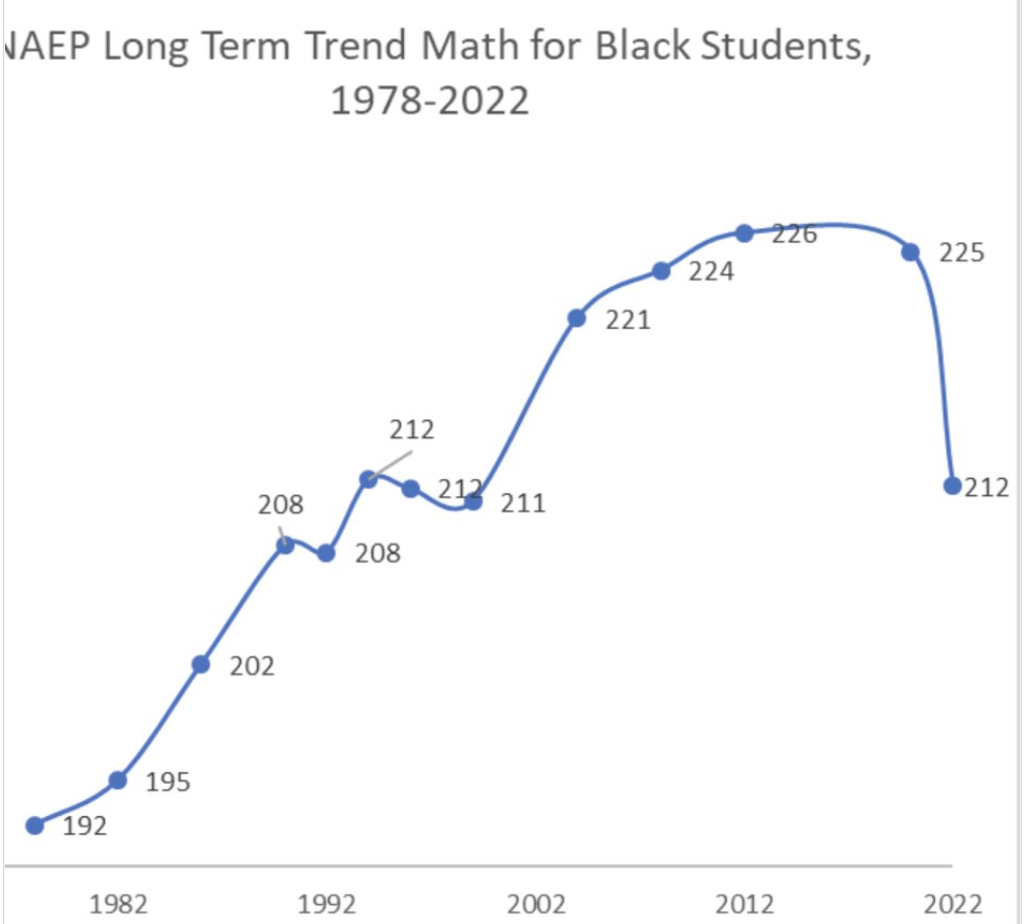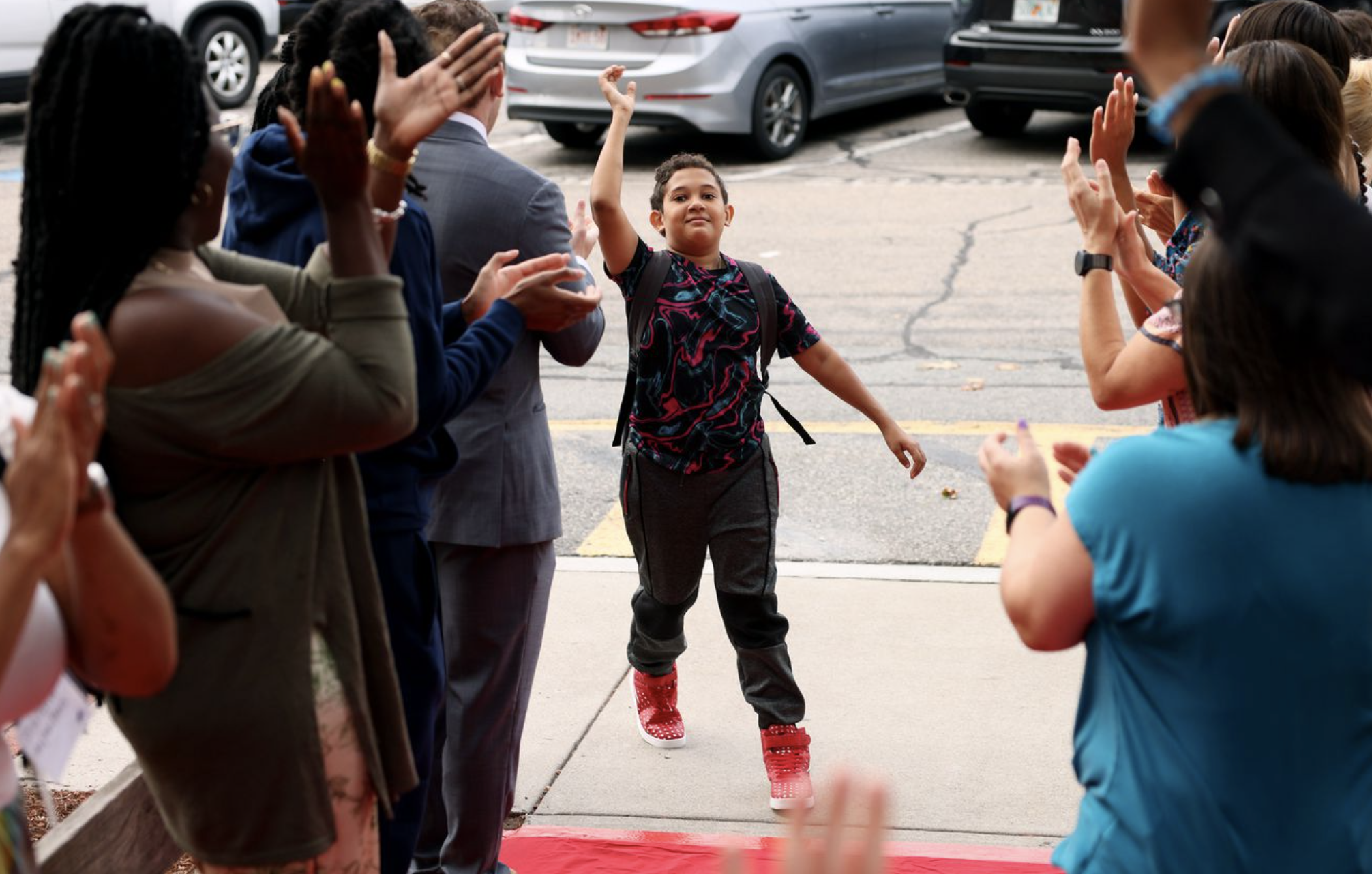FYI from BSF, 09.02.22
Stories by Number
As the adage goes, measure the change. Don’t change the measure.
The National Assessment of Educational Progress (NAEP), the “nation’s report card,” is unique in its value of constancy. Same grade levels/ages, same subjects, consistent standards with test administration, every two years, going all the way back to 1978. Because these tests are not given to every student (limited grades, sampling technique) and not “high stakes” like state assessments, they often get little attention outside of policy circles.
Except this year. Even the most principled and researched critic of standardized tests should not ignore yesterday's release of NAEP data (covered here, here, here, and here).
Assessments of 9 year-olds showed the largest decline in literacy in a generation.
Assessments of 9 year-olds showed the first decline in math in the assessment’s history.
Racial gaps increased. This graph is basically a siren.
These results were tragically expected. Schooling was interrupted repeatedly between 2020 and 2022, and many students remained in remote learning for the entirety of a year. Earlier research implied greater impacts on Black and Latino students. Even learning out of school was susceptible to inequities between and within physical buildings and classrooms.
Alarm about academic performance is belied by another longstanding measure that was released last week: the annual PDK Poll of the Public’s Attitude Towards the Public Schools. The public gives its local schools honor roll grades at the highest rate since 1974.
But, as the data shows, this is not the case for parents nationally. Their support declined, matching results seen here in Boston from a survey done by MassInc four times over the past year (report and toplines).
Individual assessments and polls are snapshots, limited to the time and sample. But when those assessments and polls are repeated over time, a flip of those snapshots takes on the form of animation, and tells a story.
Children have academic needs on a scale we have never seen before; our historically marginalized children even more so. The general public acknowledges what educators have endured over the past two years. Parents and families are increasingly concerned about their children’s needs being met.
It is a big year for schools, and they all need our support.
Notes in the Margin
Boston School Committee met Wednesday, replete with back-to-school updates. Full meeting materials here. Lost in the discussion of the end of masking and many COVID protocols, reviewing bus routes and keeping up with the state-mandated improvement plan, and trying to fill open positions, is something we always pay attention to: enrollment. The reported BPS figure of 50,890 is about 1,000 less students than reported in August 2021.
Outside of Boston, national public school decline has a clear shape and driver: white students leaving suburban public schools.
Other Matters
The decades-long debate on the science of reading instruction is now centered in New York City. Long read from the New Yorker.
If you somehow missed the 6+ year debate on exam schools, Boston Magazine walks you through it.
Next Thursday may be the first day for Boston Public Schools, but quite a few educators and kids are back in classrooms; 2015’s “Snowmageddon” pushed many cities and towns to trades days before Labor Day for later inclement weather.
Our neighbors to the north are already contending with the Orange Line shutdown. And for many other schools in Boston, such as Mission Grammar and many Boston charters, class is in session.










